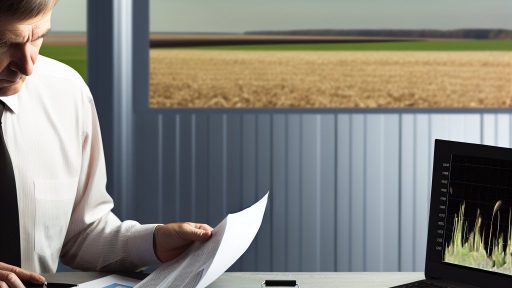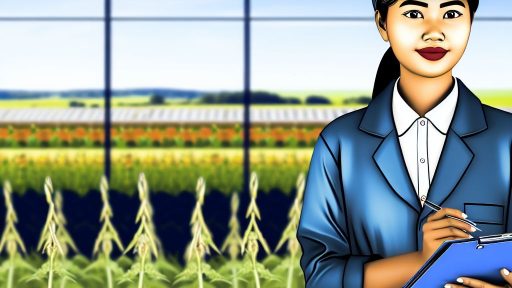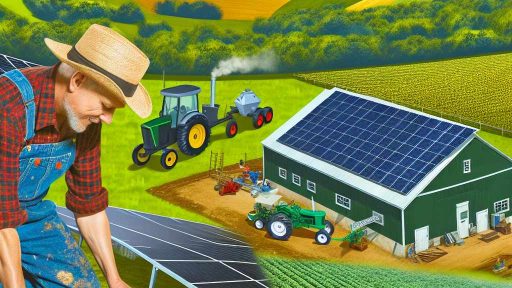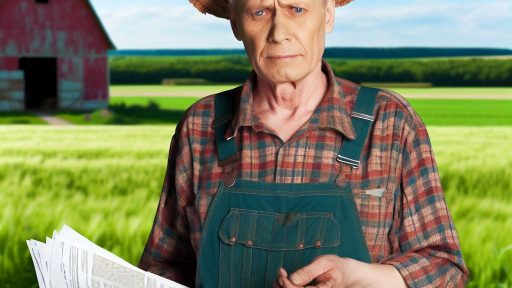Understanding Different Types of Farm Insurance Policies
General Farm Insurance
General farm insurance covers a broad range of farming activities.
This policy typically includes property insurance for buildings and equipment.
It also protects against liability claims if someone gets injured on your farm.
Farmers often choose this coverage for its comprehensive nature.
Crop Insurance
Crop insurance protects against the loss of crops due to natural disasters.
This policy helps farmers recover financially from events like droughts or floods.
Both yield-loss and revenue-protection options are available.
Farmers can select plans based on their specific crop needs.
Livestock Insurance
Livestock insurance protects farmers against loss of animals.
Coverage typically includes accidents, illness, and other risks.
This type of insurance is crucial for farmers with significant livestock investments.
Some policies may also offer coverage for theft or disease outbreaks.
Equipment Insurance
Equipment insurance covers the repair or replacement of farming equipment.
This includes tractors, harvesters, and irrigation systems.
Farmers rely on this insurance to maintain productivity and continuity.
Transform Your Agribusiness
Unlock your farm's potential with expert advice tailored to your needs. Get actionable steps that drive real results.
Get StartedIt can also cover theft and damage from accidents.
Farm Liability Insurance
Liability insurance protects farmers from lawsuits due to accidents or injuries.
This coverage is essential for farms that host visitors or offer services.
It typically covers legal fees and damages from lawsuits.
Farmers should assess their risks to ensure adequate coverage.
Specialized Farm Insurance
Specialized policies cater to unique farming operations and needs.
Examples include organic farming insurance or vineyard coverage.
These policies provide tailored options for specific circumstances.
Farmers should explore options that fit their niche operation.
Assessing Your Farm’s Unique Risks and Needs
Identifying Potential Risks
Your farm faces various risks, both natural and man-made.
Consider weather-related events such as storms, droughts, or floods.
Livestock diseases can also present significant challenges.
Furthermore, equipment failure may disrupt daily operations.
Analyze past incidents to identify patterns and vulnerabilities.
Evaluating Property Value
Understand the total value of your farm property.
This includes land, buildings, and any permanent fixtures.
Consider improvements that may have increased property worth.
Regular appraisals help keep insurance policies up to date.
Determining Coverage Needs
Decide what aspects of your farm require coverage.
Common coverage areas include crops, livestock, and equipment.
Consider liability insurance to protect against accidents.
Evaluate the need for business interruption coverage as well.
Consulting with Insurance Experts
Engage with insurance professionals to explore options.
Their expertise can help tailor policies to your needs.
Showcase Your Farming Business
Publish your professional farming services profile on our blog for a one-time fee of $200 and reach a dedicated audience of farmers and agribusiness owners.
Publish Your ProfileAsk about any available riders or additional coverages.
Compare quotes from different providers for better deals.
Reviewing and Updating Your Policy
Your farm’s needs may change over time.
Regularly review your insurance policy for relevance.
Adjust coverage as your farm grows or shifts in focus.
Stay informed about changes in local regulations and risks.
Schedule annual reviews with your insurance agent to stay aligned.
Comparing Coverage Options
Understanding Crop Insurance
Crop insurance protects farmers against crop loss due to natural disasters.
This includes protection from droughts, floods, and pests.
Additionally, it covers loss of revenue in case of low yields.
Farmers can choose from various policy options based on their needs.
Understanding the differences in coverage helps in making informed decisions.
Livestock Insurance Explained
Livestock insurance safeguards farmers’ investments in their animals.
This type of insurance covers disease, accidents, and theft.
Farmers can choose between different coverage levels based on their operation size.
For example, larger operations may want more comprehensive coverage.
Evaluating your livestock’s specific needs is essential.
The Importance of Equipment Insurance
Equipment insurance protects valuable farm machinery and tools.
This includes tractors, harvesters, and irrigation systems.
Farmers face significant financial loss if machinery is damaged or stolen.
Thus, securing adequate coverage is crucial for operational continuity.
Choosing the right equipment insurance policy provides peace of mind.
Key Considerations for Choosing Policies
Evaluating coverage options requires assessing individual farm needs.
Consider factors like location, type of crops, and livestock.
Additionally, think about the farm’s financial situation and risk tolerance.
Consulting with an insurance agent can provide valuable insights.
They can help in comparing policies to find the best fit.
Lastly, reviewing policy details, such as exclusions, is important.
Delve into the Subject: Managing Pesticide Residues In Agricultural Products
The Importance of Liability Coverage for Farmers
Understanding Liability Coverage
Liability coverage protects farmers from legal claims.
It can cover expenses due to injuries or property damage.
This type of insurance is crucial for operating a farm safely.
Why Farmers Need Liability Coverage
Farms can pose various risks to the public and workers.
For instance, accidents can occur from heavy machinery.
Additionally, livestock may cause injury or property destruction.
Without liability coverage, farmers face significant financial risk.
Types of Liability Coverage
Farmers can choose different types of liability coverage.
- General liability covers basic risks associated with farm operations.
- Product liability protects against claims related to products sold.
- Animal liability insures against injuries caused by livestock.
Assessing Your Coverage Needs
Farmers should evaluate their operation’s risks regularly.
This assessment helps to determine the necessary coverage amount.
Additionally, consulting with an insurance agent can provide insights.
Showcase Your Farming Business
Publish your professional farming services profile on our blog for a one-time fee of $200 and reach a dedicated audience of farmers and agribusiness owners.
Publish Your ProfileThey can recommend appropriate policies based on individual needs.
Choosing the Right Insurance Provider
Not all insurance providers offer the same level of service.
Farmers should research companies with expertise in agricultural insurance.
Reading reviews and seeking referrals can guide this choice.
Ultimately, selecting a reliable provider ensures peace of mind.
Explore Further: Compliance Requirements For Agricultural Conservation Programs
Evaluating Policy Limits and Deductibles
Understanding Policy Limits
Policy limits define the maximum amount your insurance provider pays during a claim.
Choosing appropriate limits is essential for protecting your financial investment.
Review the value of your farm assets to determine needed coverage amounts.
Consider potential risks specific to your farming operation.
Also, take into account local economic conditions affecting asset values.
Determining Deductibles
Deductibles represent the amount you pay out of pocket before the insurer covers a claim.
Choosing the right deductible impacts your premium and overall financial plan.
Higher deductibles often lead to lower premiums.
Conversely, lower deductibles can increase your premium costs.
Evaluate your financial capacity to cover deductibles during a loss.
Balancing Coverage and Costs
It’s crucial to strike a balance between coverage and the costs of premiums.
Regularly assess your farming needs against policy options available.
Explore multiple insurance providers to find the most affordable coverage.
Additionally, consult with an insurance expert for personalized advice.
Reviewing Contract Details
Pay close attention to the details in your insurance contract.
Look for exclusions that might limit your coverage unexpectedly.
Ensure that the terms of your policy align with your farming operations.
Keep up to date with any changes in your assessment that may affect your policy.
Regularly reviewing these details can save you from potential losses.
Explore Further: Benefits of Farm-To-Table Policies: Enhancing Sustainability in Farming
Researching Insurance Providers
Evaluating Reputation
Start by examining the reputation of potential insurance providers.
Look for customer reviews and testimonials online.
Consider ratings from reputable agencies like A.M. Best or Moody’s.
Ask fellow farmers about their experiences with specific companies.
Assessing Financial Stability
Financial stability is crucial for your insurance provider.
Review the company’s financial statements if available.
Check their claims-paying ability and reserve funds.
A stable provider ensures you receive payouts when needed.
Comparing Coverage Options
Identify the types of coverage offered by each provider.
Be sure to compare policies for your specific farming needs.
Look into agricultural liability, property, and crop insurance.
Verify if they offer additional endorsements for enhanced protection.
Understanding Premium Costs
Evaluate the premium rates from different providers.
Remember that the cheapest option may not provide adequate coverage.
Showcase Your Farming Business
Publish your professional farming services profile on our blog for a one-time fee of $200 and reach a dedicated audience of farmers and agribusiness owners.
Publish Your ProfileConsider the value of the coverage versus the cost.
Request quotes and clarify what each includes before deciding.
Find Out More: Steps to Apply for Agricultural Insurance Coverage
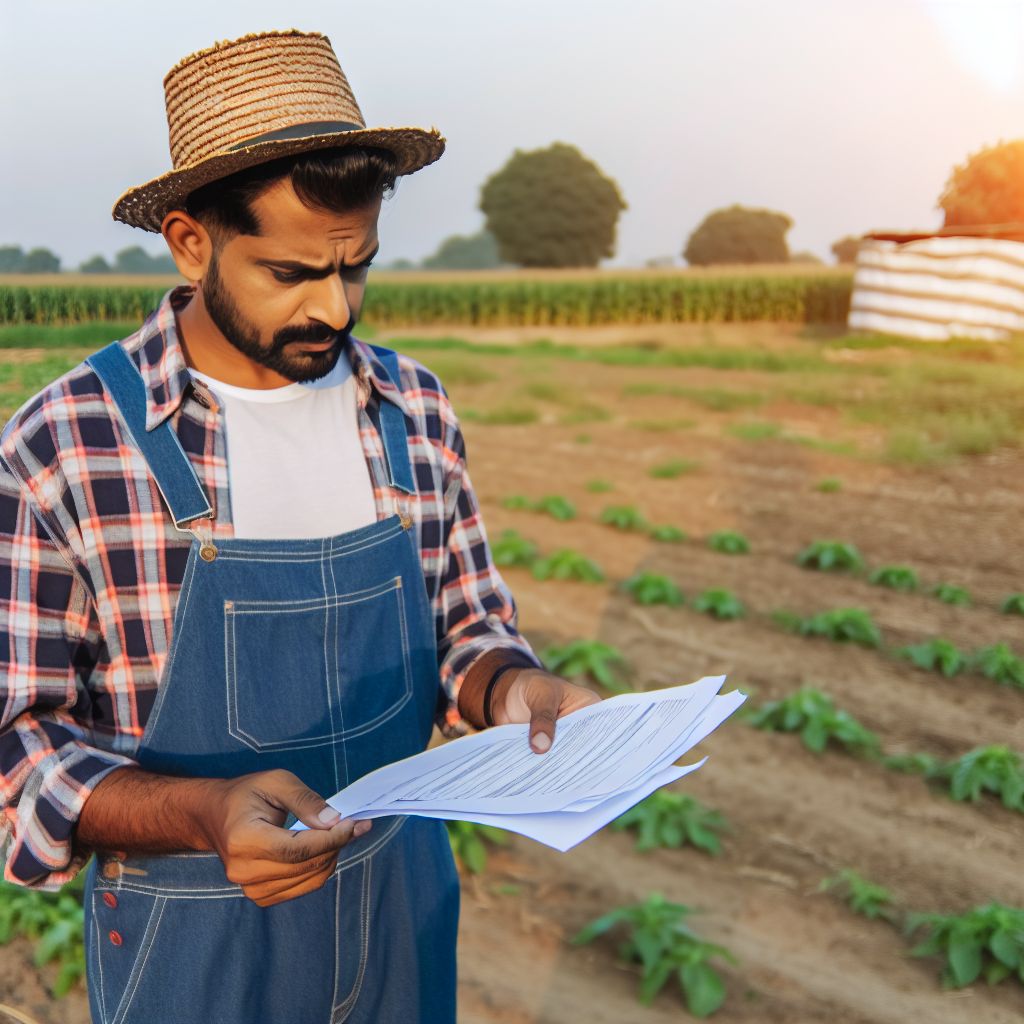
Reading and Understanding Policy Exclusions and Conditions
Importance of Policy Exclusions
Understanding policy exclusions is crucial for every farmer.
These exclusions define what is not covered by your insurance policy.
Hence, knowing these details helps you manage risks effectively.
Additionally, policy exclusions can vary significantly between insurers.
Therefore, you should read your policy documents carefully.
Key Exclusions in Farm Insurance Policies
Common exclusions often include natural disasters like floods and earthquakes.
Your policy may also exclude damage caused by wear and tear.
Furthermore, exclusions may apply to specific equipment or machinery.
It’s vital to clarify these points with your insurance provider.
How to Navigate Policy Conditions
Policy conditions outline the responsibilities of both the insurer and the insured.
These conditions determine how and when you can file a claim.
For example, maintaining your equipment properly is usually a condition.
Moreover, timely reporting of any incidents is often required.
Understanding these conditions can prevent potential disputes.
Steps to Ensure Comprehensive Understanding
Start by obtaining a complete copy of your policy documents.
Next, read through the exclusions and conditions thoroughly.
Inquire about any terms you find confusing or unclear.
Consider seeking professional advice from a knowledgeable insurance broker.
Finally, keep your insurance provider’s contact information handy.
Getting Quotes and Shopping Around for the Best Rates
Understanding Your Insurance Needs
Before shopping for farm insurance, assess your specific needs.
Consider factors like the type of farm and crops you grow.
Also, think about equipment, livestock, and facilities to insure.
This comprehensive understanding helps in comparing quotes.
Researching Insurance Providers
Start by researching various insurance providers in your area.
Look for companies that specialize in agricultural insurance.
Reviews and ratings can provide insights into each company’s reputation.
Additionally, ask other farmers for their recommendations.
Gathering Multiple Quotes
Request quotes from at least three different insurance companies.
Ensure each quote covers similar coverage to make comparisons fair.
Take your time reviewing each quote carefully.
This step is critical to finding the best rates available.
Considering Policy Customization
Some insurance providers allow for policy customization.
Discuss your specific needs and ask about available options.
Customization might help lower your premiums.
Explore options such as higher deductibles or fewer coverage areas.
Evaluating Coverage Terms
Pay attention to the coverage terms in each quote.
Understand what is included and what is excluded.
Showcase Your Farming Business
Publish your professional farming services profile on our blog for a one-time fee of $200 and reach a dedicated audience of farmers and agribusiness owners.
Publish Your ProfileNote any limitations or conditions that may apply.
This knowledge helps you avoid potential gaps in coverage.
Comparing Premiums and Deductibles
Compare not only premiums but also deductibles among quotes.
A lower premium might come with a higher deductible.
Calculate potential out-of-pocket expenses for each scenario.
This helps in making a more informed decision.
Understanding Customer Support and Claims Process
Assess the customer support offered by each insurance provider.
Determine how easy it is to reach out for assistance.
Additionally, inquire about the claims process for each company.
A straightforward claims process can significantly benefit you.
Making the Final Decision
After careful consideration, choose the insurance provider that best meets your needs.
Prioritize coverage, customer service, and overall value.
Once you decide, carefully review the policy terms before signing.
Your farm’s protection depends on your informed choices.
Consulting with an Insurance Agent Specializing in Agriculture
Choosing the right farm insurance policy can be complex.
Therefore, consulting with an agent who specializes in agriculture is beneficial.
These agents understand the unique risks farmers face.
They can help identify the coverage your farm requires.
The Importance of Specialization
An insurance agent with agricultural expertise knows the industry well.
They are familiar with specific policies suited for different types of farms.
This specialization ensures you receive tailored advice.
As a result, you will be better prepared for potential risks.
Evaluating Your Farm’s Needs
Your farm’s unique needs must be assessed during the consultation.
Factors such as size, location, and type of crops impact coverage requirements.
Additionally, consider any livestock or farm equipment you own.
The agent will review these factors to provide suitable options.
Understanding Policy Options
Farm insurance policies come in various forms.
These may include crop insurance, liability insurance, or equipment coverage.
Each policy serves a specific purpose and protects against different risks.
With the agent’s guidance, you can navigate these options clearly.
Comparing Quotes and Coverage
After discussing your needs, gather multiple quotes.
Comparative analysis helps identify the best value for your farm.
Ensure you review not just prices, but also coverage limits.
This process is vital for making an informed decision.
Building a Long-Term Relationship
Establishing a good relationship with your insurance agent is essential.
They can provide ongoing support and policy reviews over time.
This partnership adds value as your farming operation evolves.
Regular check-ins ensure your coverage keeps pace with changes.
Additional Resources
Animal Policy & Regulatory Issues | Economic Research Service
Agricultural Subsidies | National Agricultural Library
Showcase Your Farming Business
Publish your professional farming services profile on our blog for a one-time fee of $200 and reach a dedicated audience of farmers and agribusiness owners.
Publish Your Profile
